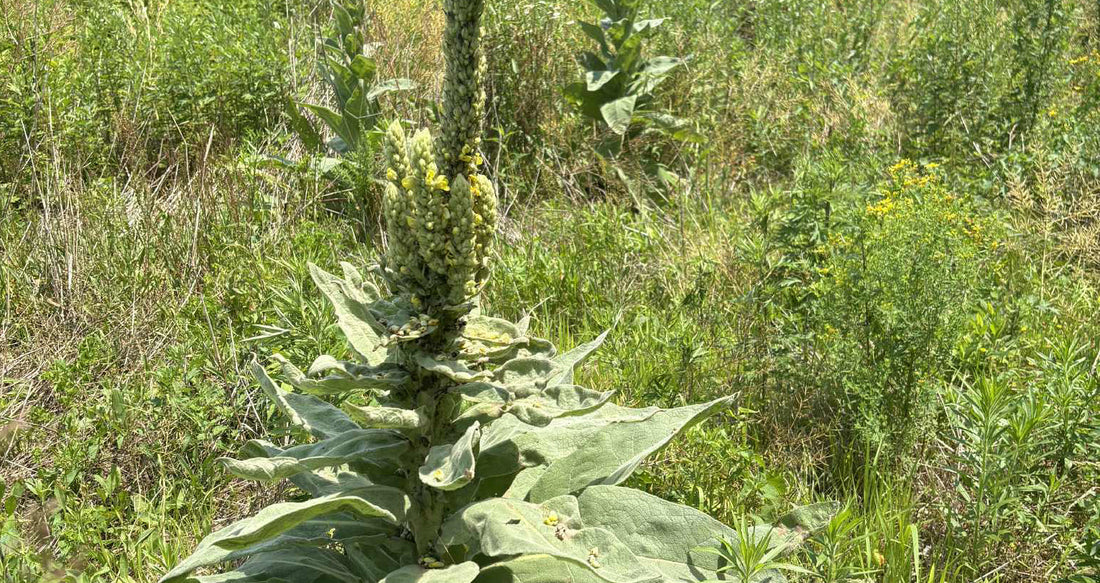
The Magic of Mullein: Why You Should Forage and Grow This Farm-Friendly Herb
Share
|
|
If there's one plant that's become a quiet staple around our family farm here at The Hippie Farmer, it's mullein. With its tall, woolly stalks and soft, silvery leaves, this humble herb shows up year after year, often where we least expect it. While some might mistake it for a weed, we’ve come to appreciate mullein as one of the most useful and resilient plants growing right alongside us. Let’s talk about why mullein deserves a place in your garden and your apothecary. What Is Mullein, Anyway?Mullein (Verbascum thapsus) is a biennial plant native to Europe, Asia, and North Africa, but it's now naturalized throughout North America. It’s easy to recognize: big, velvety leaves in its first year, and in the second year, a tall stalk that can reach up to 7 feet, topped with cheerful yellow flowers. It’s tough, drought-tolerant, and thrives in disturbed soil—which is why you’ll often see it popping up in unexpected places around the farm. Medicinal BenefitsMullein has been used for centuries in traditional herbal medicine, especially for respiratory issues. Here's what makes it a staple in many herbalists’ toolkits: 1. Lung SupportMullein is perhaps most famous for its soothing effect on the lungs. Whether you’re dealing with a lingering cough, chest congestion, or just want to breathe easier during allergy season, mullein tea or tincture can help open up airways and ease inflammation. 2. Ear InfectionsInfused mullein oil (often mixed with garlic) is a classic folk remedy for earaches and infections—gentle, effective, and safe for kids and adults alike. 3. Anti-Inflammatory & AntimicrobialIts leaves and flowers both contain compounds that can fight inflammation and mild infections, making it a great addition to homemade salves or poultices. |
Why Grow It?Here on the farm, we’re all about working with nature, not against it. Mullein is one of those plants that rewards you just for letting it be. Here’s why you might want to intentionally cultivate it: Low maintenance: It basically grows itself. Pollinator friendly: Those tall flower spikes are a bee magnet. Natural soil healer: Mullein helps break up compacted soil with its deep taproot. Wildlife habitat: Birds and beneficial insects love hanging out around it. Bonus: It looks stunning in the garden. Seriously, those tall flower stalks are architectural. Foraging Mullein on the FarmIf mullein is already growing wild around your property, you’re in luck. Harvest responsibly by taking only what you need, leaving plenty behind for pollinators and reseeding. Here’s how: First-year leaves: Best for tea and tinctures. Pick the younger, tender leaves in early morning after the dew dries. Second-year flowers: Use for infused oils or salves. Harvest when fully open, but skip any that look brown or buggy. How We Use It on the HomesteadAt The Hippie Farmer, we dry mullein leaves for winter teas, infuse oils for our all-natural healing salves, and keep a small jar of mullein tincture in our herbal medicine cabinet for cough season. We also just love letting it grow. It adds character to the landscape and reminds us that sometimes, the best medicine is what shows up when we stop mowing. With love and goat kisses, |
  |




